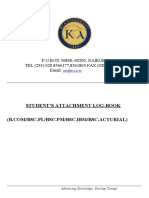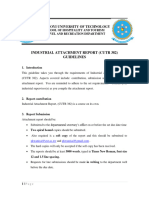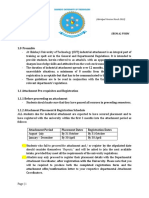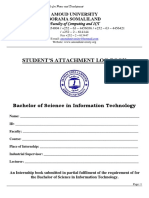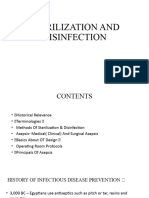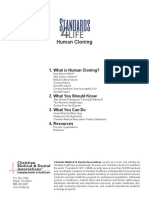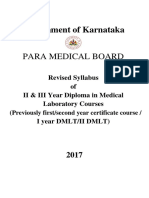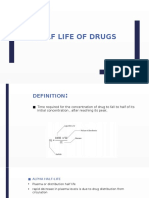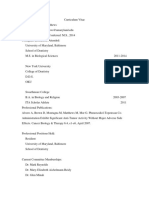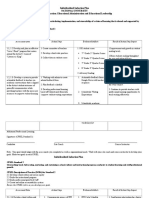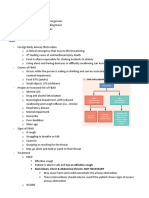PO Box AC 939, Ascot
Bulawayo
Zimbabwe
Voice: (09) 282842
National University
of Science and
Technology
Department of Chemical
Engineering
NOTES FOR GUIDANCE
FOR ALL PART 4 STUDENTS ON INDUSTRIAL PLACEMENT
(1) INTRODUCTION
The objective of these notes is to provide you with information about the way that the industrial attachment is
assessed and give guidance on maintaining a Log Book and preparing the final Report. A copy of the
"GUIDELINES FOR STUDENTS" produced by the University is reproduced on page 5. You may expect one or
two visits from your Academic Supervisor during the placement.
It has also been suggested that, beside the general work program agreed with the Company, you might
undertake a PERSONAL PROJECT. This could be an investigation into a technical topic of particular interest to
you and possibly also the Company itself. The first visit from your Academic Supervisor will be a good time for a
preliminary discussion of this matter.
(2) ASSESSMENT
The total mark awarded for the industrial placement is made up from the weighted sum of marks from four
components. These are shown in the following table together with the respective weighting.
Components Weighting
Combined Industrial and Academic Supervisor's
Assessment 50%
1
� Industrial Attachment Report 30%
Posters 5%
Oral Presentation 15%
Overall Mark: 100%
The finally determined mark for each activity will be awarded by the Supervisor, after discussion with another
staff colleague involved in the Interview, Oral Presentation and Report assessment. The mark for the Report will
include a component, reflecting the quality of your logbook.
YOU WILL BE REQUIRED TO SUBMIT YOUR REPORT AND LOGBOOK DURING THE LAST WEEK OF
MARCH. YOU WILL BE REQUIRED TO ATTEND A FORMAL INTERVIEW AND GIVE AN ORAL AND
POSTER PRESENTATION TO ACADEMIC STAFF AND FELLOW STUDENTS (DATES TO BE ADVISED)
(3) LOG BOOK
You are required to keep a careful day-to-day record of the work you undertake during your industrial
placement. Each page should be numbered and dated as you write it up every day. Your log will include details
of the day's activities, technical information about equipment you have worked on or with (unless this is
confidential to the Company), research you are undertaking into the history and current operating structure of
the Company, general information acquired from discussions with colleagues. You may want to record useful
references, theoretical analysis, new ideas or initiatives that have occurred to you.
The action of writing down this type of information has many benefits. It helps commit the information more
firmly to memory and it promotes a more critical attitude in relation to the information. A well-produced Log Book
forms an excellent basis for a productive discussion with your Supervisor on his/her visits to you. Aim to achieve
a high standard, of presentation, since your Supervisor's assessment of your Log Book will be strongly affected
by the quality of the day-to records you have maintained. Information in the Log Book will be your principal
information resource, while writing your Industrial Attachment Report.
(4) INDUSTRIAL ATTACHMENT REPORT
The objective of this report is to give a full account of the work carried out during the Industrial Attachment
period, describing tasks undertaken and the nature of the training and experience you have received. It will
inevitably be based on the daily Log Book maintained during the attachment. Plan ahead and start preparation
of the Report at least five weeks before the submission date. Indeed, you may be able to start initial drafting
much earlier. This is a major report and you should aim to achieve a 'professional presentation'. The
appearance of a report is strongly influenced by the quality of the diagrams and figures. Careful attention to their
production will be time well spent. You may even have access to a drawing package! Please pay close attention
to the following matters:
(4.1) What format should be adopted?
2
�The report should be clearly structured and include:
TITLE PAGE Title, name of student, organisation and Academic Supervisor and dates of placement
SUMMARY A concise synopsis, indicating the work done, experience gained and main conclusions (not
more than one page)
TABLE OF CONTENTS Listing numbered sections with page numbers
INTRODUCTION Made up of (a) and (b) below
.
BODY OF REPORT Made up of (c) to (e) below.
.
ASSESSMENT (of the industrial attachment period with any constructive criticism
of the overall scheme, or suggestions for improvement, which you might want to offer, section
(g) below)
CONCLUSIONS
ACKNOWLEDGEMENTS a paragraph thanking the firm, the supervisor and any their individuals for
opportunities, help and advice given)
REFERENCES (technical documents/papers)
APPENDICES Individual research or design projects, bulk listing of results, computer
programs, etc.
Brief explanation of sections:
(a) A general overview of the organisation and structure of the Company in which the attachment has been
carried out, including international aspects where this is appropriate. An organogram will be helpful.
(b) A statement of the complete training plan agreed between the Company and the academic supervisor,
and the associated time scale. Was this adhered to?
(c) A flow diagram of the entire plant showing the movement of material from start to finish.
(d) Process description of the units of the plant.
(e) A detailed account of the work actually performed in each successive stage of the placement, and the
associated responsibilities.
(f) a full account of a personal research or development project that you undertook.
(g) the impact the placement had on your professional development.
(4.2) How must it be produced?
The report must be typed with 1½ spacing on standard A4 sheets (one side only). A margin of about 3 cms is
required on the left-hand side. For uniformity the report must be bound with a plastic ring binder. Facilities for
fitting this type of binder are available at modest cost.
(4.3) What is the recommended length?
The length of the report will depend upon the nature of the program, but about 60 pages (15,000 words) might
be typical. Your Supervisor will much prefer to receive a shorter concise well-written report than a longer
rambling report with irrelevant material!
(4.4) How Many Copies?
3
�THREE copies must be handed in to the Departmental Secretary or your Academic Supervisor after oral
presentations. One copy will be returned to you after the examination. Note that late submission will attract a
heavy marking penalty!
(4.5) On Word-processing
Most Word processors include a Spellchecker and a Thesaurus and even a Grammar check. Make the most of
such facilities to improve the standard of your report further. In any case adopt the practice of always having a
dictionary to hand when you are writing.
When preparing your report on a Word processor remember to maintain at least one backup of your files on
diskette. With security in mind these copy diskettes should be write protected and kept in different locations as
far as possible and appropriately marked. The importance of doing this can hardly be over emphasised. Give
thanks to Microsoft for the DISKCOPY command.
(4.6) Report Assessment Criteria
Your Report will be particularly assessed by its adherence to the following aspects:
(a) degree of "professional presentation"
(b) good report format (see section 4.1 above)
(c) appreciation of Company structure and activities
(d) statement of training program with associated timescale, and whether the program was followed
(e) work actually performed and associated responsibilities
(f) an account of the personal research or development project undertaken
(g) conclusions and recommendations, including your assessment of the value of the placement to you
personally
(5) PART V PROJECTS
In Part V of the course you will undertake both individual research and chemical engineering design projects
lasting the whole year. While a list of project topics is suggested by members of staff, you are welcome to
suggest your own topics for both research investigation and design. This is a must for all students. This could
arise out of your industrial experience, and interaction with Engineers in your company. However, acceptance
of your suggestion will be governed by the suitability of the subject, and the availability of both the necessary
equipment and a willing supervisor! The objectives of the project should be realistic for the time scale available.
The time to discuss such a proposal is on your return to the Department in May.
(6) FINALLY, ...
Best wishes for a successful, challenging and enjoyable placement. Feel free to approach your Supervisor or
myself at any time, if you feel you require help or are having any particular problems that you would like to
discuss.
NUST INDUSTRIAL ATTACHMENT GENERAL GUIDELINES FOR
STUDENTS
4
�1.1 The student is subject to University Regulations and the Company Regulations during the industrial
attachment.
1.2 The student is expected to: -
(a) conform to the Company's regulations, working time and discipline.
(b) fulfil the Supervisor's instructions concerning the training process and carrying out of the industrial research
project.
(c) write a Log Book on a daily basis and submit a report after finishing the training in a given Department (or
Training Unit).
(d) take part only with educational purpose in mind according to the ultimate instructions of the Supervisor.
(e) put his/her best efforts to acquire extensive knowledge and skills in order to achieve the required standard of
training.
(f) keep good relations with all the staff of the Company.
(e) promote the good name of NUST.
1.3 The choice of a Company for the industrial attachment will not be based on any probable monetary benefits
the student may stand to gain.
1.4 The student must always bear in mind his/her conduct during the industrial attachment period will reflect not
only on him/her but also on NUST and that it may also affect considerably the future industrial attachment
placements and the relationship between NUST and the Company.
GUIDELINES FOR THE INDUSTRY ON THE TREATMENT OF THE
STUDENT DURING THE INDUSTRIAL ATTACHMENT
2.1 The student will be subject to the Company's regulations and is expected to function like a full-time
employee of the Company.
2.2 For the period of the industrial attachment the student will have a student allowance, an insurance and
medical aid cover from the University.
2.3 The Company is required to provide the student every opportunity to function like a full-time employee and
permit him/her to actively participate in all aspects of the business including management and
administration except where confidentiality constraint may not permit his/her participation.
2.4 Wherever possible, the Company is requested to assist the student by providing welfare measures such as
providing help in finding suitable accommodation close to the Company, access to canteen facilities,
Company transport facilities, etc.,
2.5 If the Company wishes to pay the student an extra allowance, the arrangement is only between the two
parties, that is the student and the Company involved.
CHEMICAL ENGINEERING DEPARTMENT GUIDELINES FOR INDUSTRIAL SUPERVISOR
The industrial supervisor will;
5
�1. Be responsible for supervising and monitoring the student throughout the whole attachment period,
minimum period of 7 months.
2. Make sure that the student undergoes safety induction before he/she is introduced into the process plant
i.e. for the safety and security of the student.
3. make sure that indemnity forms are filled for the fulfilment of point 2
4. Provide a training programme for the student (the training program should be detailed indicating the
stages in the line of production and the periods of time to be spent at each stage. If possible the objectives
or outcomes which are to be expected to be impacted to the student.
5. Will read and sign the student’s logbook, daily, weekly or monthly as per agreement between the two
(supervisor and student) on all the activities or tasks covered.
6. Will make sure that the student is taught how to use all the laboratory equipment used for analysis in the
lab and the various equipment used in the plants. (If possible, during shutdowns to teach the student how
to maintain equipment, dismantle or install equipment used in the plant).
7. Communicate with the academic supervisor on the student’s performance and behaviour whenever there
is a need, apart from completing the assessment forms.
8. Will provide a final assessment mark on how the student would have performed during the attachment
period, which will be filled in the assessment form and the mark, will not be disclosed to the students.
The marks are to be sent to the academic supervisor. They can be sent in a sealed envelope or scanned
and sent by email.




















